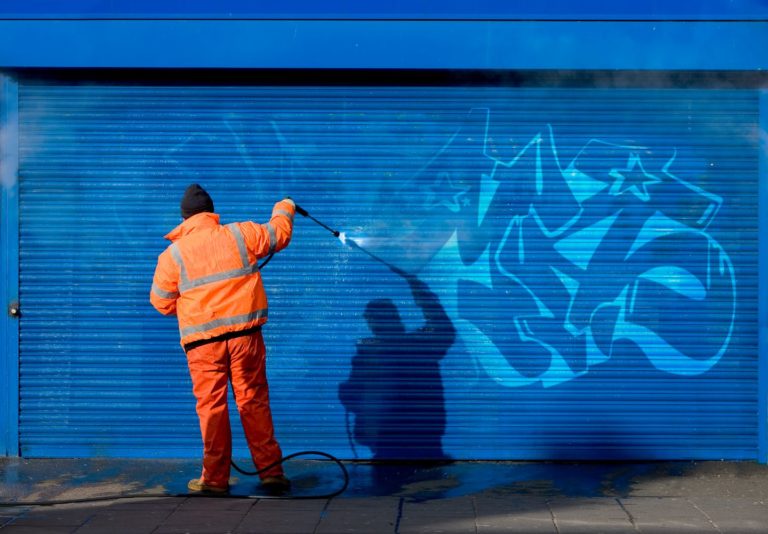
Whether you’re trying to strip old paint from a deck, remove graffiti from a wall, or worried about accidentally peeling paint off your house—this is one of the most common questions: Can pressure washing remove paint?
The short answer is: Yes, it absolutely can. In fact, pressure washing is a popular method for paint removal. But here’s the catch—it depends on the surface, the paint type, and your technique. When done with the right tools, it can save you hours of scraping. Done wrong, it can damage the surface underneath. 🧱😬
Let’s break it down so you can decide when and how to use pressure washing to remove paint—intentionally or avoid it accidentally.
🎯 When You Want to Remove Paint
Pressure washing is commonly used as a paint stripping method in projects like:
- Prepping wood siding for repainting
- Removing flaking paint from concrete or brick
- Cleaning off graffiti from fences or walls
- Stripping paint from outdoor furniture or decking
The benefit? It’s fast, effective, and chemical-free when compared to sanding or using paint remover gels. 👌
✅ Best Surfaces for Paint Removal with Pressure Washing
Not all surfaces respond the same. Here’s where pressure washing can work well:
- Wood siding (with peeling or flaking paint)
- Concrete or brick walls
- Metal railings or fences
- Wooden decks or patios
- Outdoor furniture
🎯 The more textured or absorbent the surface, the better pressure washing can break the bond between the paint and the material.
🚫 Surfaces to Be Careful With
While pressure washing can remove paint, it can also damage underlying surfaces if you’re not careful. Be especially cautious with:
- Soft wood (e.g., cedar or pine)
- Old or brittle brick
- Stucco or plaster
- Fiber cement siding
High pressure can gouge, scar, or splinter these materials. In many cases, a soft wash or lower PSI approach is better if you’re trying to preserve the surface.
Browse Amazon Here For Soft Washing Equipment And Accessories
🛠️ How to Remove Paint Using a Pressure Washer
Here’s a basic step-by-step guide to using a pressure washer for paint removal:
1. Choose the Right Equipment
- PSI: Use 2,500–3,500 PSI
- Nozzle: A 15° (yellow) or 25° (green) tip gives focused power
- Optional: Use a turbo nozzle for concentrated paint-stripping action
2. Test a Small Area
Start in a corner or hidden spot. You want to find the right combo of pressure and distance without harming the surface underneath. 🧪
3. Use Consistent Technique
- Hold the wand at a 45-degree angle
- Keep a 6–12 inch distance
- Spray in overlapping strokes
- Work in small sections
If paint doesn’t budge, try increasing the pressure slightly, or use a scraper to assist between sprays.
🧴 Use a Paint-Softening Agent for Tough Jobs
For stubborn paint:
- Apply a biodegradable paint softener or stripper
- Let it dwell for 10–20 minutes
- Follow up with pressure washing to lift off softened layers
This method is especially helpful on thick paint, graffiti, or old deck coatings.
⚠️ If You Want to Avoid Removing Paint
Sometimes you want to clean painted surfaces, not strip them. In that case:
- Lower the pressure to under 1,500 PSI
- Use a 40° nozzle
- Keep a greater distance (12–18 inches)
- Avoid pressure washing older paint unless you plan to repaint
A safe wash can brighten the paint and remove dirt without damaging the coating. 🧼✨
🧠 Final Thoughts
So, can pressure washing remove paint? Absolutely. It’s a fast, effective, and chemical-free method when done right—but it’s not without risks. 🎯💧
To recap:
- ✅ Use high pressure and narrow nozzles when paint removal is the goal
- ⚠️ Be cautious on delicate or aged surfaces
- 🧴 Use softeners or chemicals for stubborn layers
- ❌ Lower your PSI when cleaning painted surfaces you want to keep intact
With the right setup and patience, pressure washing can help you strip paint like a pro or clean without damage. Just make sure you know your goal—and match your method accordingly. 🎨💥🧽
Browse Amazon Here For Top Rated Power Washers And Accessories






